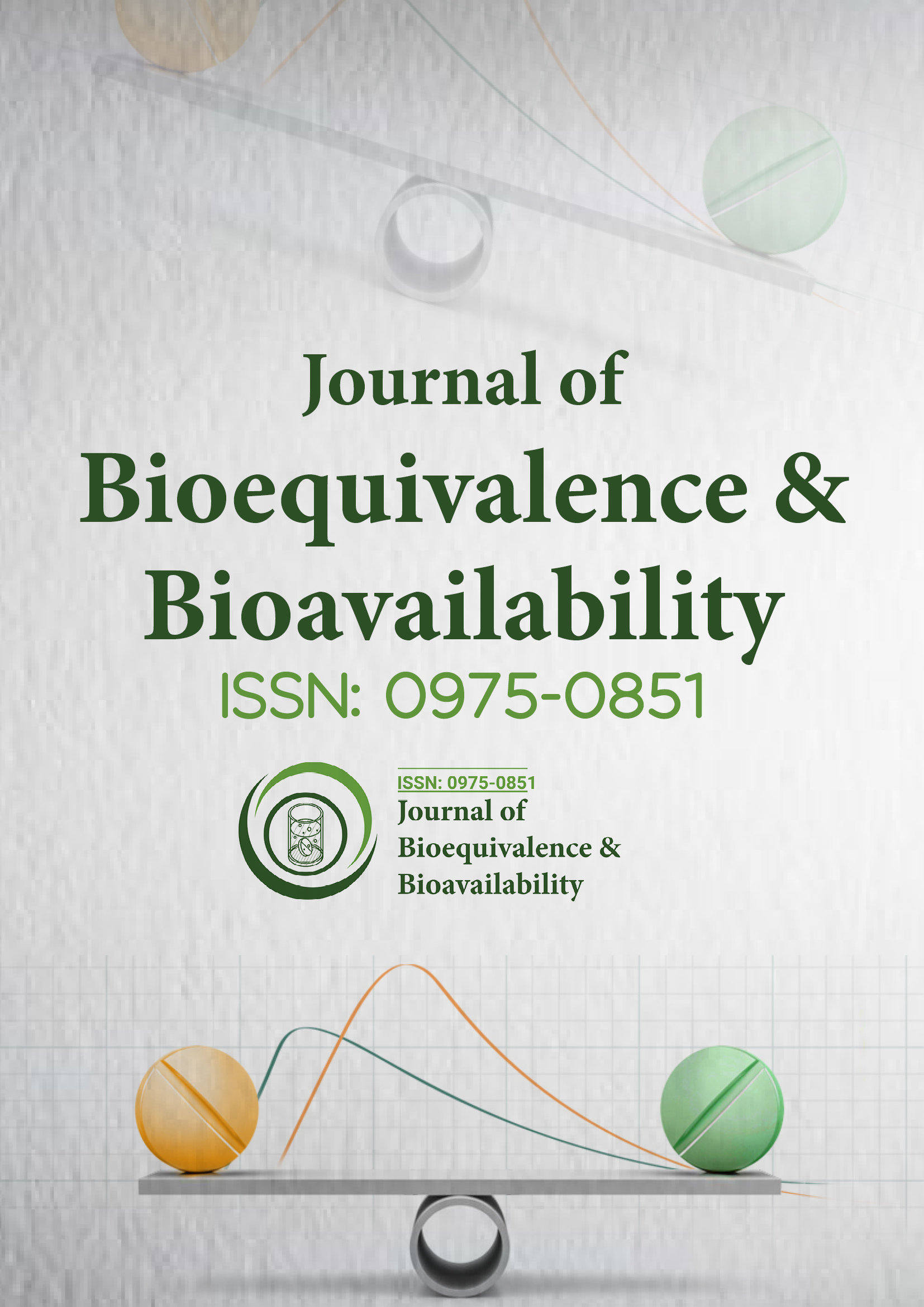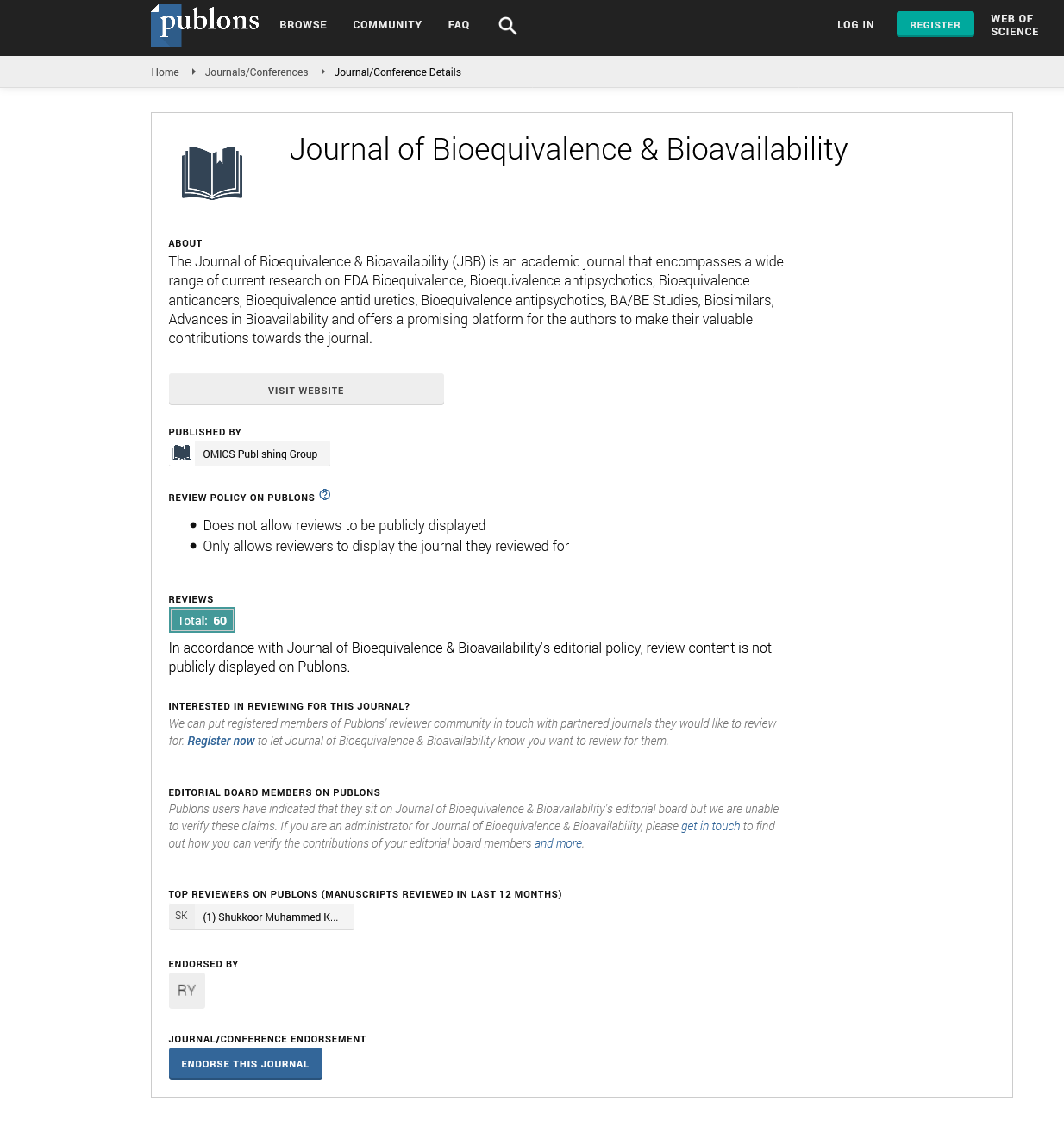Indexed In
- Academic Journals Database
- Open J Gate
- Genamics JournalSeek
- Academic Keys
- JournalTOCs
- China National Knowledge Infrastructure (CNKI)
- CiteFactor
- Scimago
- Ulrich's Periodicals Directory
- Electronic Journals Library
- RefSeek
- Hamdard University
- EBSCO A-Z
- OCLC- WorldCat
- SWB online catalog
- Virtual Library of Biology (vifabio)
- Publons
- MIAR
- University Grants Commission
- Geneva Foundation for Medical Education and Research
- Euro Pub
- Google Scholar
Useful Links
Share This Page
Journal Flyer

Open Access Journals
- Agri and Aquaculture
- Biochemistry
- Bioinformatics & Systems Biology
- Business & Management
- Chemistry
- Clinical Sciences
- Engineering
- Food & Nutrition
- General Science
- Genetics & Molecular Biology
- Immunology & Microbiology
- Medical Sciences
- Neuroscience & Psychology
- Nursing & Health Care
- Pharmaceutical Sciences
Biosimilars ? From conformation, ligand binding and stability
International Conference and Exhibition on Biowaivers & Biosimilars
September 10-12, 2012 Hilton San Antonio Airport, USA
Rohanah Hussain
Scientific Tracks Abstracts: J Bioequiv Availab
Abstract:
I t is known that the conformation of biopharmaceuticals or biologics, can be perturbed in solution under various conditions including pH, salts, ionic strength, hydrophobicity, ligands and or excipients interactions. The understanding of conformational changes of peptides and proteins is very important because it has a significant impact on the success of their pharmaceutical formulations and delivery profiles. Host-ligand binding interactions can be assessed by a variety of techniques such as Isothermal Calorimetry (ITC), Surface Plasmon Resonance (SPR), Fluorescence and Circular Dichroism (CD). Each technique has its own strengths and weaknesses. ITC can be inconclusive when the thermal effects, associated with ligand interactions are rather small. SPR requires one of the components to be immobilized that can lead to positive or negative false/positive results. Fluorescence requires the presence of a fluorophore that does not absorb and emit light in the same wavelength of the ligand. CD relies on the presence of conformational changes induced upon ligand addition to determine unambiguously binding interactions. Recently, B23 had developed a novel assay of assessing biostability and ligand binding using the high photon flux. High photon flux in the vacuum and far UV region is known to denature/degrade biopolymers. Measures are in place at B23 beamline to eliminate this effect. However, UV denaturation/degradation can also be exploited as a novel method for assessing or discriminate biopolymer stability as well as ligand binding interactions. Here we present some examples using this novel high photon flux of SRCD B23 beamline technique.
Biography :
Rohanah Hussain research interests are in the field of biopharmaceuticals in drug design and delivery and novel applications of analytical techniques in the field of Life Sciences. She is currently a Senior Beamline Scientist at Diamond Light Source for Circular Dichroism beamline B23 supporting and collaborating with a large number of beamline user groups from both academia and industry.

